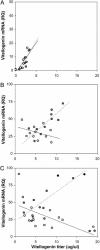Reproductive ground plan may mediate colony-level selection effects on individual foraging behavior in honey bees
- PMID: 15277665
- PMCID: PMC509206
- DOI: 10.1073/pnas.0403073101
Reproductive ground plan may mediate colony-level selection effects on individual foraging behavior in honey bees
Abstract
The colony-level phenotype of an insect society emerges from interactions between large numbers of individuals that may differ considerably in their morphology, physiology, and behavior. The proximate and ultimate mechanisms that allow this complex integrated system to form are not fully known, and understanding the evolution of social life strategies is a major topic in systems biology. In solitary insects, behavior, sensory tuning, and reproductive physiology are linked. These associations are controlled in part by pleiotropic networks that organize the sequential expression of phases in the reproductive cycle. Here we explore whether similar associations give rise to different behavioral phenotypes in a eusocial worker caste. We document that the pleiotropic genetic network that controls foraging behavior in functionally sterile honey bee workers (Apis mellifera) has a reproductive component. Associations between behavior, physiology, and sensory tuning in workers with different foraging strategies indicate that the underlying genetic architectures were designed to control a reproductive cycle. Genetic circuits that make up the regulatory "ground plan" of a reproductive strategy may provide powerful building blocks for social life. We suggest that exploitation of this ground plan plays a fundamental role in the evolution of social insect societies.
Figures



References
-
- Engels, W. (1990) Social Insects (Springer, Berlin).
-
- Hölldobler, B. & Wilson, E. O. (1990) The Ants (Belknap Press of Harvard Univ. Press, Cambridge, MA).
-
- Page, R. E. & Erber, J. (2002) Naturwissenschaften 89, 91–106. - PubMed
-
- Page, R. E. & Mitchell, S. D. (1991) in PSA, eds. Fine, A., Forbes, M. & Wessels, L. (Philos. Sci. Assoc., East Lansing, MI), Vol. 2, pp. 289–298.
Publication types
MeSH terms
Substances
Grants and funding
LinkOut - more resources
Full Text Sources

